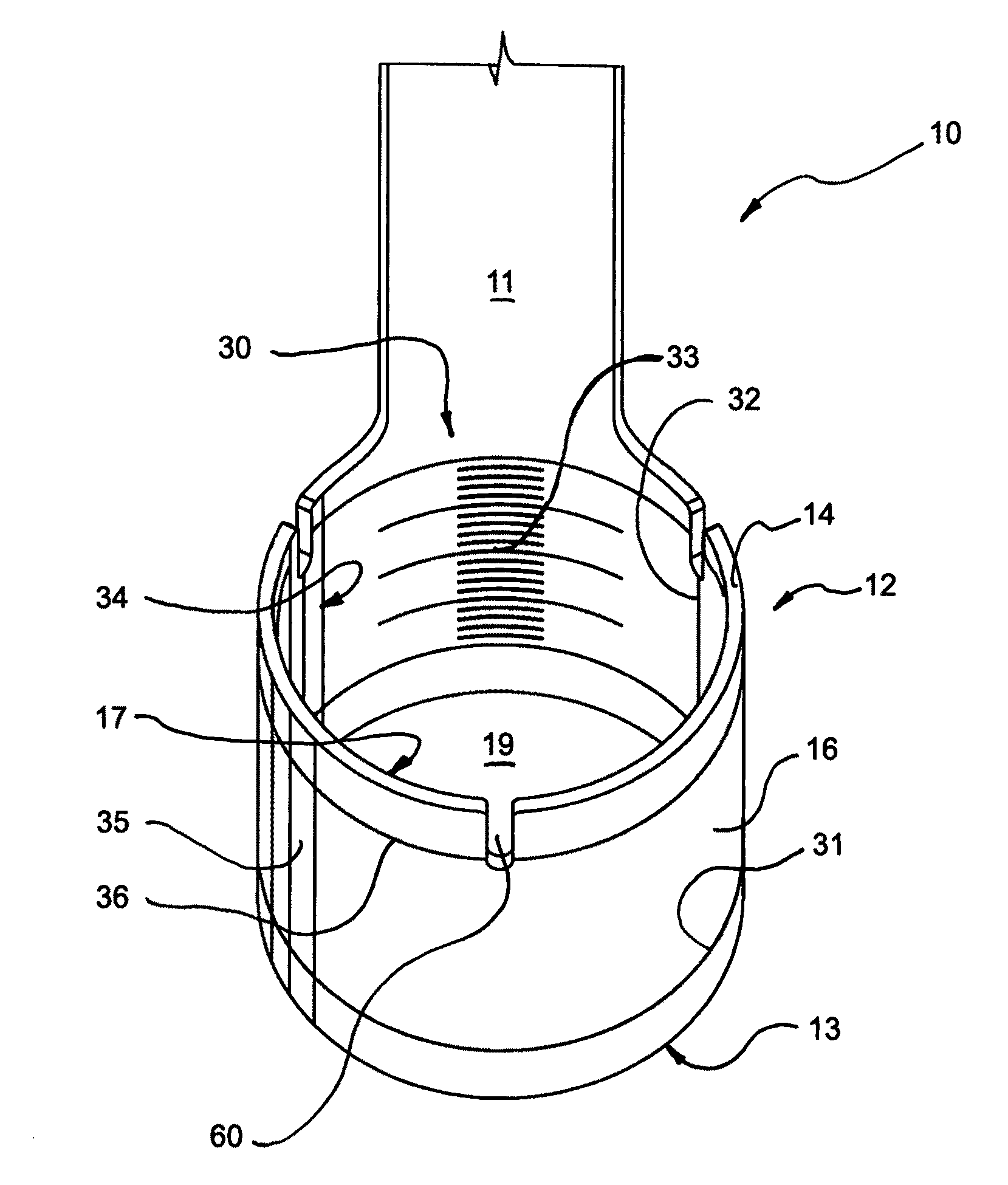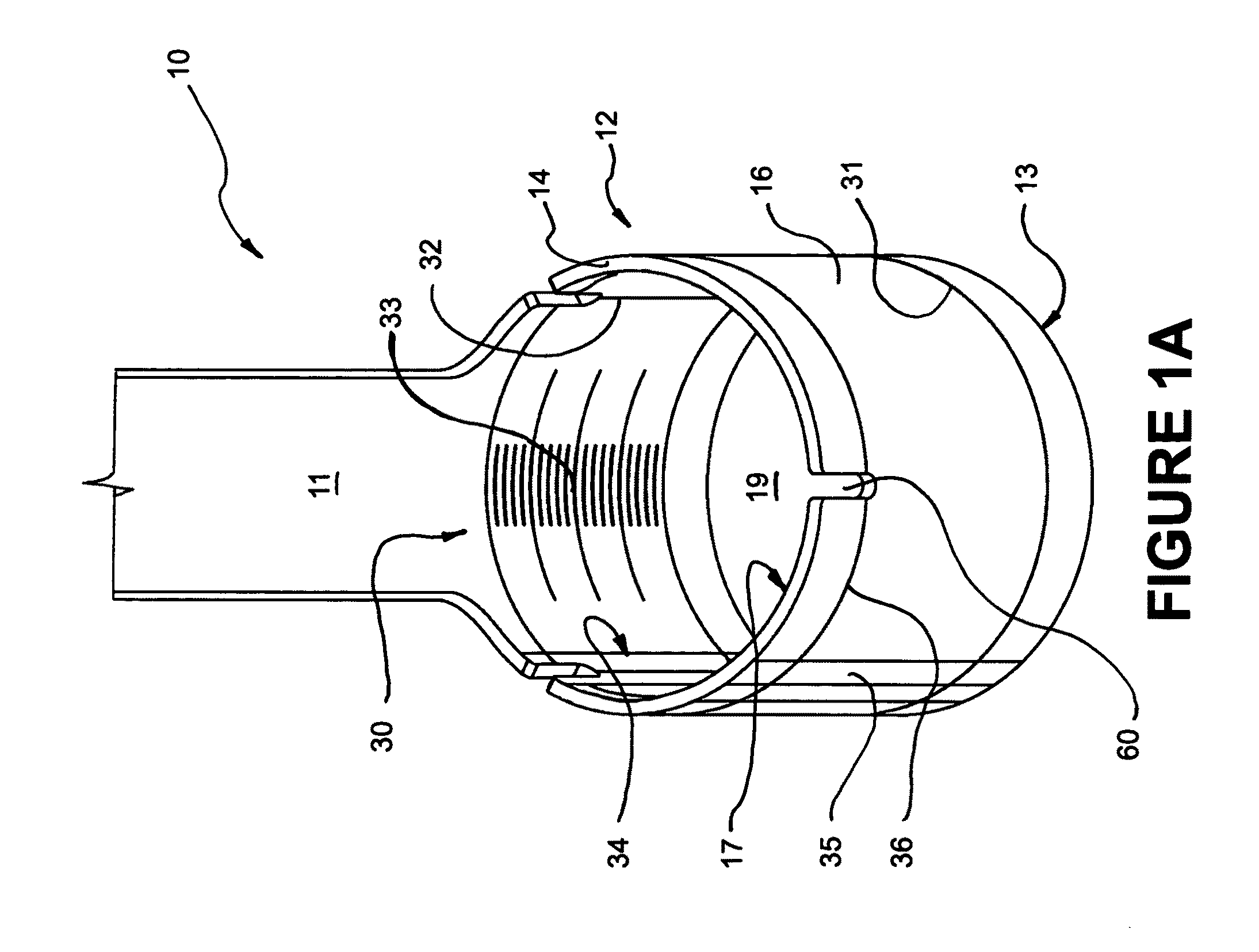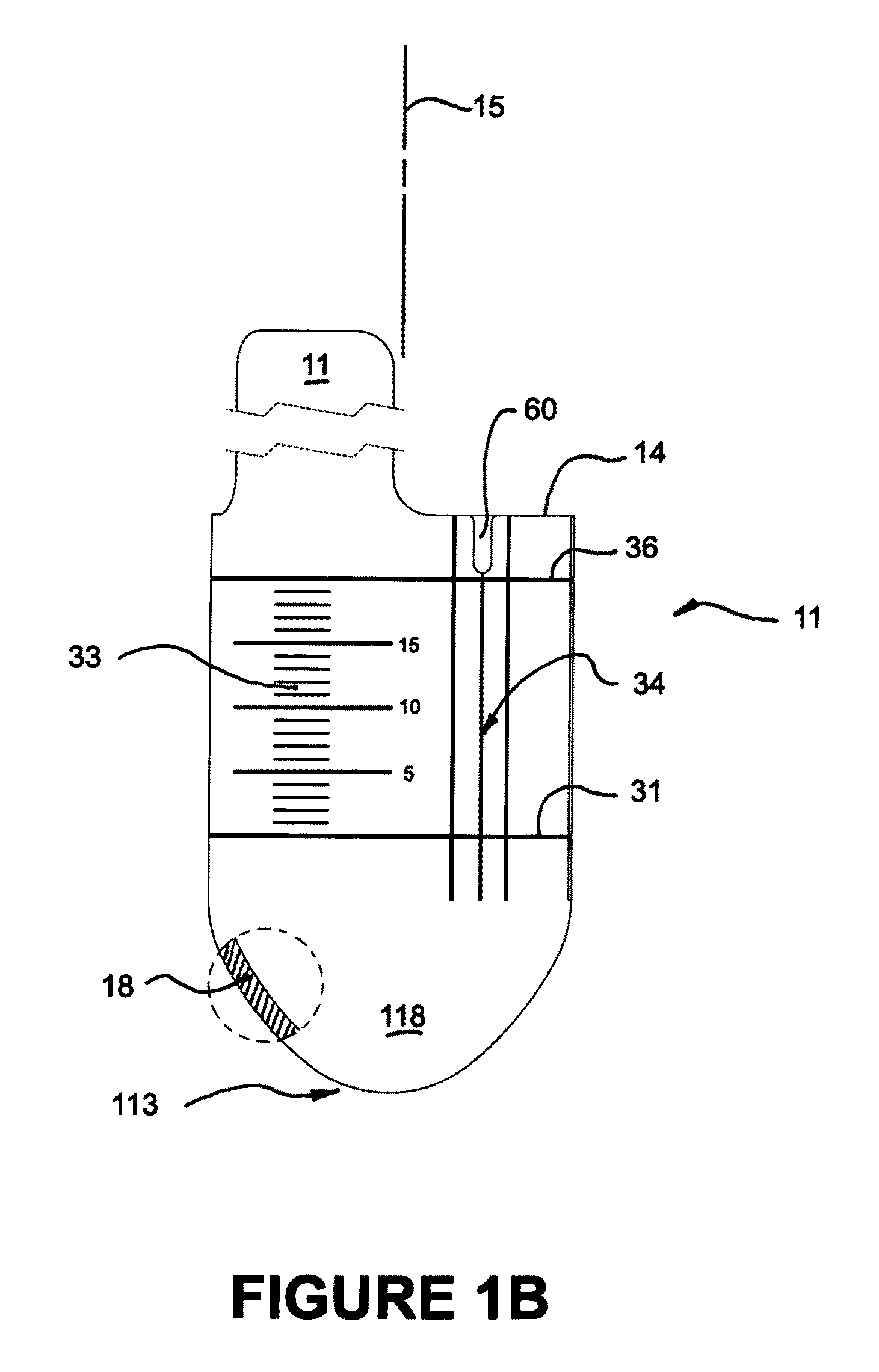Surgical tool for measurement of valve annulus and cusp geometry
a surgical tool and valve technology, applied in the field of cardiac surgery, can solve the problems of limited use of instruments, and achieve the effect of quick assessment of aortic structures or anatomic parameters
- Summary
- Abstract
- Description
- Claims
- Application Information
AI Technical Summary
Benefits of technology
Problems solved by technology
Method used
Image
Examples
first embodiment
[0027]Referring to FIG. 1A, there is shown a surgical measuring tool, instrument or implement 10 in accordance with the present invention. Tool 10 is described here below and shown throughout the figures in the context of use during a repair an aortic valve 89 or reconstruction surgery of the aortic root 90. It should however be understood that tool 10 may be used in other surgical contexts where a cardiac valve is contained in a tubular conduit, without departing from the scope of the present invention. For example, surgical tool 10 may be used in the context of surgical repair of a pulmonary cardiac valve.
[0028]In a first embodiment, surgical measuring tool 10 is comprised of a handle portion 11 and a substantially cylindrical or tubular functional end or portion 12 configured and sized for insertion within an aortic root 90 of a patient's aorta 99. Functional end 12 is provided in a variety of calibrated external diametrical sizes to be able to measure the internal diameter of ao...
second embodiment
[0050]Referring now to FIGS. 7A-7C, the present invention will now be described in greater detail. Surgical tool 100 is comprised of a handle portion 11 and a substantially cylindrical portion 120. Handle portion 11 is either permanently mounted to top portion 140 of cylindrical portion 120, or demountable connected thereto so that a solitary handle may interchangeably be coupled to a variety of different incrementally sized cylindrical portions 120 so as to enable calibrated measurement of the internal diameter of the aortic root 90. Bottom portion 130 is configured with a progressively smaller diameter or profile to ease insertion into said aortic root. As illustrated, bottom portion 130 is configured with a substantially bullet shaped or parabolic profile 180. Other, progressively smaller profiles are also possible to ease insertion of measuring tool 100 into an aortic root, such as, for instance, a substantially conical or generally spherical or truncated conical profile. Top po...
third embodiment
[0052]Referring to FIGS. 8A-8B, the present invention will now be described in greater detail. Surgical tool 200 is similar to tool 100 except that it further comprises at least one optical lens member 170 for refracting the light reflected by conical mirror 153 a predetermined amount. In this embodiment, optical lens 170 is of a generally concave geometry. Tool 200 requires at least one lens member, but depending on the amount of refraction desired or optical manipulation sought, a pair, or even a plurality of cooperating lens members may be advantageously used.
[0053]With reference to FIG. 8B, optical lens 170 refracts light by a predetermined amount in a manner that reduces the magnification of the aortic structures being reflected by conical mirror 153, refracted by lens 170 and visible on top portion 140. As such, measurement increments 332 in reflected measurement array 302 are closer together than the measurement increments 33 in the array 30. As well, the aortic structures in...
PUM
 Login to View More
Login to View More Abstract
Description
Claims
Application Information
 Login to View More
Login to View More - R&D
- Intellectual Property
- Life Sciences
- Materials
- Tech Scout
- Unparalleled Data Quality
- Higher Quality Content
- 60% Fewer Hallucinations
Browse by: Latest US Patents, China's latest patents, Technical Efficacy Thesaurus, Application Domain, Technology Topic, Popular Technical Reports.
© 2025 PatSnap. All rights reserved.Legal|Privacy policy|Modern Slavery Act Transparency Statement|Sitemap|About US| Contact US: help@patsnap.com



